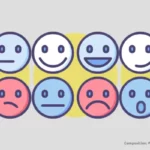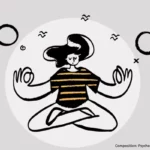
Things are the way they are, not the way we want them to be. Life flows continuously and does not always take our wishes or plans into account. Our power over events is always limited since we can only control what depends on us.
They are unquestionable truths and yet difficult to accept. Our reluctance to let go of the desire to control events, the impossibility of flowing with the changes and the rejection of reality when it defies our expectations, become the main causes of anguish, frustration and suffering. Japanese culture has a concept that helps us deal with such situations: arugamama.
The deep meaning of arugamama
Arugamama (在るが儘) is much more than a word, it is a concept used in Zen Buddhism and whose meaning is linked to radical acceptance. It refers to “things as they are”, although a more literal translation would be: “as it is”.
A person who practices arugamama is in harmony with nature and the course of life. He accepts that it is cold in winter and hot in summer, without regretting it uselessly, because it is something he cannot change. He also accepts the unavoidable facts of life, such as illness or death, because they are events that are often out of his control.
Obviously, arugamama should not be confused with passive resignation. It is not being carried away by the winds of fate. It makes a distinction between things that we can change and those that are beyond our control.
For example, in winter we can warm ourselves next to a stove when it’s cold. We can’t get the outside temperatures to drop, but we can warm up inside the house. We cannot avoid all diseases, but we can follow a healthier lifestyle that will help us prevent many of them or at least delay their onset.
In fact, arugamama invites us to dedicate our efforts and energy to what we can change and accept what we cannot influence to avoid the frustration, dissatisfaction and anger that these events generate.
Arugamama, an essential pillar of Morita Therapy
The Japanese psychiatrist and philosopher Shoma Morita developed a therapy around the concept of arugamama in the last century. He set out to help people suffering from social anxiety and depression by giving them a new worldview and way of dealing with their problems.
Morita was convinced that nothing in life is completely positive or negative. He believed that external stimuli simply generate pleasant or unpleasant emotions that we can learn to live with. His therapy begins with acceptance and then focuses on the only thing we can control: our actions.
Through this approach, he not only addressed psychological disorders, but also promoted self-realization, since Morita believed that this begins with full acceptance, which means acceptance of oneself, of others, and of the world in which we live.
Unlike the standard approach Western psychology has taken for decades, which leads to a deeper exploration of our emotions and their origins, Morita therapy takes a more pragmatic line by teaching us that emotions, both pleasant and unpleasant, pass.
This holistic approach aims to improve our functioning in everyday life, rather than paying attention to specific symptoms. Morita thought that if we are able to focus on our reactions and actions, we can move on with our lives and “heal” little by little.
In fact, his underlying premise is that unpleasant symptoms are a natural part of the human experience. Morita Therapy helps people reorient themselves to the natural world, the world we have to deal with over and over again, taking a restorative approach to enhance our natural healing abilities.
Morita helped his patients move away from worry and the tendency to fight symptoms, which interferes with the natural recovery process and only leads to more worry and worsening symptoms.
He helped them accept that unwanted symptoms are a natural part of the human experience, rather than something we must control or eliminate, and that emotions come and go, so they can be lived with. In practice, Morita taught people to live with unpleasant emotions, instead of striving to get rid of them, something he considered impossible.
The subtle, but transcendental, difference between arugamama and acceptance
Although the concept of arugamama is linked to acceptance, they are not the same. In fact, Morita Therapy does not use the word acceptance because it suggests an intellectual choice, which implies that we can decide whether or not to accept our feelings, an idea that moves away from Morita’s philosophy.
The concept of arugamama does not only imply intellectual acceptance, but rather goes one step further as it is a state of connection with the here and now, a state of flux in which we see events as they are, without adding value judgments nor pretend that they are different.
For that reason, Morita Therapy promotes an “embodied experiential acceptance of the self.” In other words, an acceptance that emanates from the freedom to allow ourselves to be as we really are, without letting external events capture our attention and unleash a sea of worries.
This kind of acceptance of the “self” can only come through experiences of being one with action, one with nature, it does not come from one’s own mind. You can’t tell yourself that you accept your feelings, nor can you force yourself to do so. According to Morita, this strategy not only does not work, but is counterproductive because it produces a rebound effect that keeps us obsessed with feelings, within a loop of worries.
In a way, the acceptance promoted by the concept of arugamama is like that of small children who cry when they are sad and smile when they are happy in a natural way, without adding anything else to those experiences, which makes them intense, but ephemeral.
In this way, the practice of arugamama connects us to our true nature and allows us to move with the natural ebb and flow of our thoughts and emotions, helping us to stay focused on the things that are really important to us.
The alternative is to get caught up in mental conflict, thinking about what we should have been or what we should have done. This leads us to waste mental and emotional energy in prolonged states of anger, resentment, regret, and fear. Those states are very unhealthy, both mentally and physically.
The 3 “A” of the arugamama
1. Accept your feelings
When we are not able to manage our emotions and feelings, they can prevent us from enjoying life. However, since these are internal sensations, we need to develop the ability to tolerate them, even if we prefer not to have them. Without that tolerance, we are extremely vulnerable and we are left at the mercy of emotional fluctuations, which can derail our plans.
Without that tolerance, we worry excessively about our inner experiences, to unhealthy levels. As a result, we become distracted from the world around us, disconnected from the needs of the others, and forget about the tasks ahead.
For that reason, when we face a problem we must ask ourselves: What am I feeling? What is the origin of those emotions? Perhaps we feel unappreciated or angry because our ideas and opinions are ignored. Instead of fighting against these feelings, we simply have to see them as temporary states that, sooner or later, will disappear.
2. Accept the circumstances
The world does not revolve around our plans and desires. When we are not satisfied with life, we want change to take place and we want it immediately. However, most of the time that is simply not possible.
The concept of arugamama invites us to look at reality as it is and accept circumstances for what they are. Rejecting reality prevents us from seeking valid alternatives. Only with acceptance can come recovery.
It is convenient to try to look at the world without the prism of our expectations. Just taking note of what’s going on, avoiding the impulse to judge or reject things. Only when we accept what is happening are we ready to act adaptively and change what is in our hands.
Arugamama does not mean passive resignation. Quite the opposite. It takes a great deal of strength and motivation to accept what is, especially when we don’t like it, and then consciously work to the best of our ability with the circumstances we find ourselves in and with the resources at our disposal to move forward.
3. Take action
Action is essential in Morita Therapy. When we are faced with problems and adverse situations, we can understand the arugamama as an incitement to ask ourselves: What now? The way things are, what can I do right now?
Living well with the resources that we have and in the circumstances in which we find ourselves is a way of understanding the final step of arugamama. That can be applied to any situation in life, from job dissatisfaction to relationship conflicts, illness or financial difficulties.
Whatever the problem, we need to accept the underlying emotions and then ask ourselves what we can do with things as they are. We may not be able to change the event itself, but we can change the way we deal with it. And, often, that’s enough to change everything.
Sources:
Nakamura, M. et. Al. (2023) A century of Morita therapy: What has and has not changed. Asia-Pacific Psychiatry; 15(1): e12511.
Sugg, H. et. Al. (2016) Morita therapy for depression and anxiety (Morita Trial): study protocol for a pilot randomised controlled trial. Trials; 17: 161.



